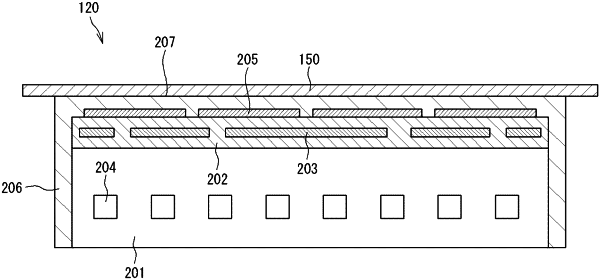| CPC H01L 21/6833 (2013.01) [H01J 37/32715 (2013.01); H01L 21/68757 (2013.01)] | 8 Claims |

|
1. A Johnsen-Rahbek force type electrostatic chuck comprising:
a metal substrate;
an electrode for electrostatic attraction provided on the metal substrate with an insulating layer interposed between the metal substrate and the electrode for electrostatic attraction; and
a dielectric layer constituting an electrostatic attraction surface in contact with a workpiece,
wherein
the dielectric layer includes a ceramic spray coating and a sealing component with which pores of the ceramic spray coating are filled, and
the sealing component contains a metal organic salt containing a rare earth element.
|